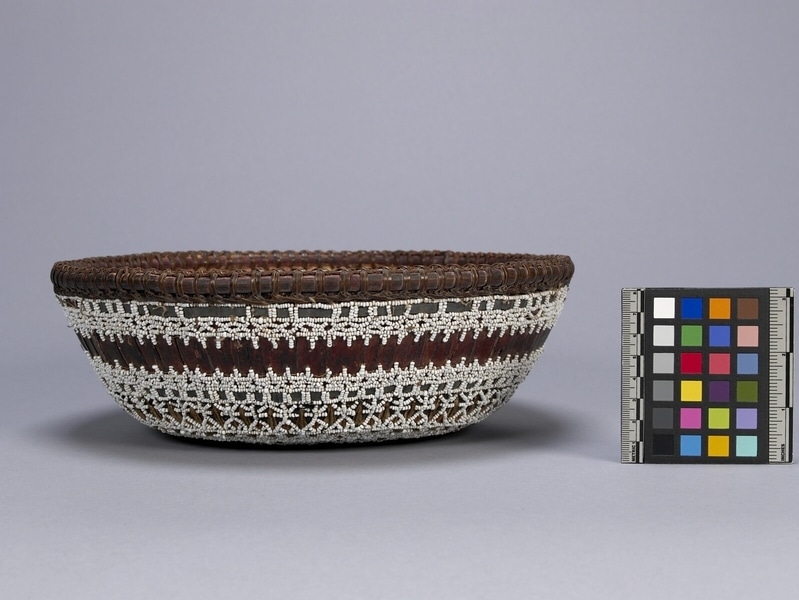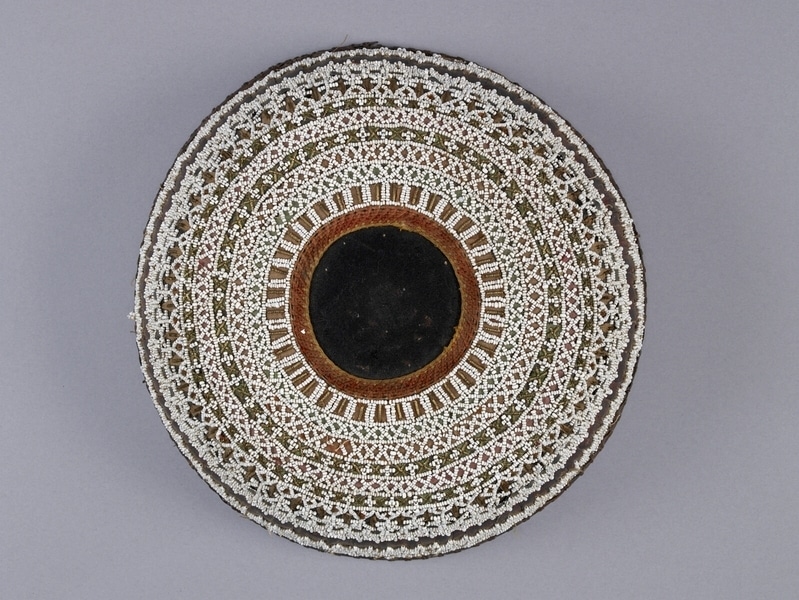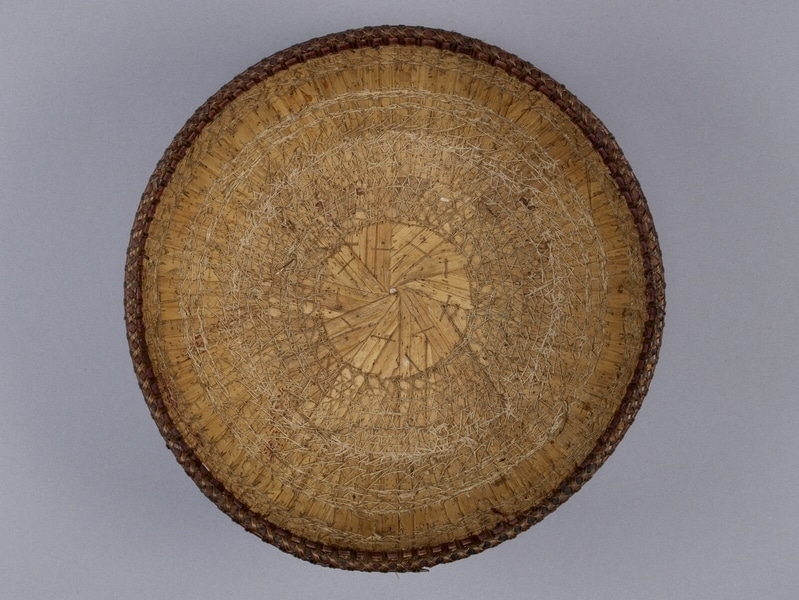Offering Basket Item Number: 985/4 from the MOA: University of British Columbia




Description
A basket made from palm leaf strips vertically stitched together with fibre to create a bowl-shape. The outer surface is almost entirely covered with beadwork over a dark brown-black cloth. The circular base is left un-beaded.
History Of Use
This decorated offering bowl is made of dried leaves from palm trees known as lontar in Indonesia. Beadwork in Bali has traditionally been used to decorate sacred items, and has now become popularized through beaded designs on clothing, bags and sandals. Offering bowls or baskets are used by the Hindu community in Bali. The offerings are called banten. There are different types of offerings. Simple daily offerings, known as Canang sari – fruit, flowers, rice, betel and incense – are placed in trays made of woven coconut or banana leaves, and left around a home, a family shrine or along the road. They are perishable goods and ephemeral works of art, and are a sacred way for Balinese Hindu worshippers to express gratitude and represent their devotion to the gods. More elaborate offerings are made for religious festivals, rituals at temples, and other ceremonies.
Cultural Context
religious; ceremonial
Specific Techniques
The stitches inside connect the lontar strips into a bowl shape, and attach the beads on the outside.
Item History
- Made in Bali, Indonesia
- Owned by Philippe Mignon before August 8, 1984
- Received from Philippe Mignon (Seller) and Unknown (Funding source) on August 8, 1984
What
Who
- Culture
- Balinese
- Previous Owner
- Philippe Mignon
- Received from
- Philippe Mignon (Seller) and Unknown (Funding source)
Where
- Holding Institution
- MOA: University of British Columbia
- Made in
- Bali, Indonesia
When
- Ownership Date
- before August 8, 1984
- Acquisition Date
- on August 8, 1984
Other
- Item Classes
- basketry; beadwork
- Condition
- fair
- Accession Number
- 0985/0004